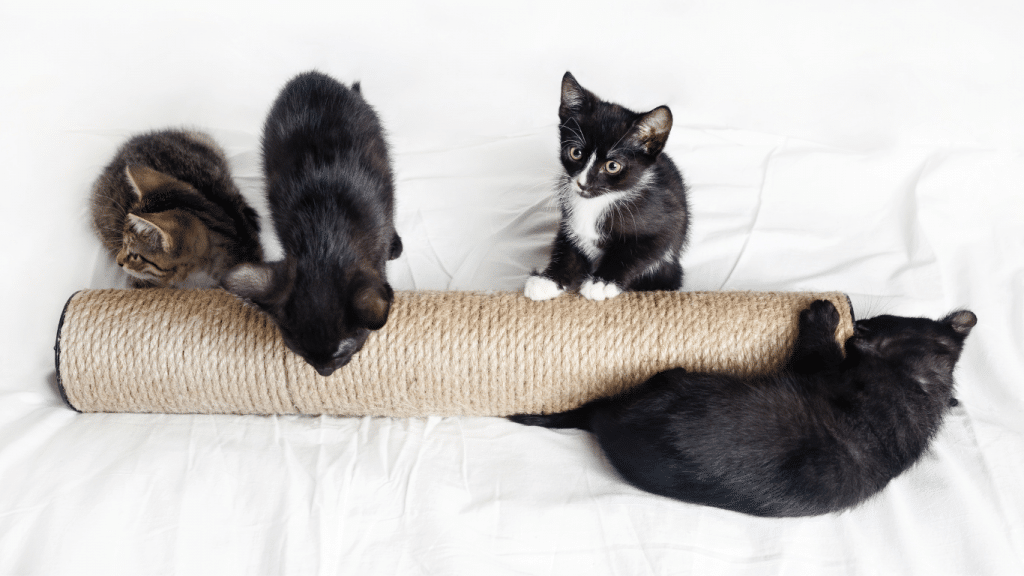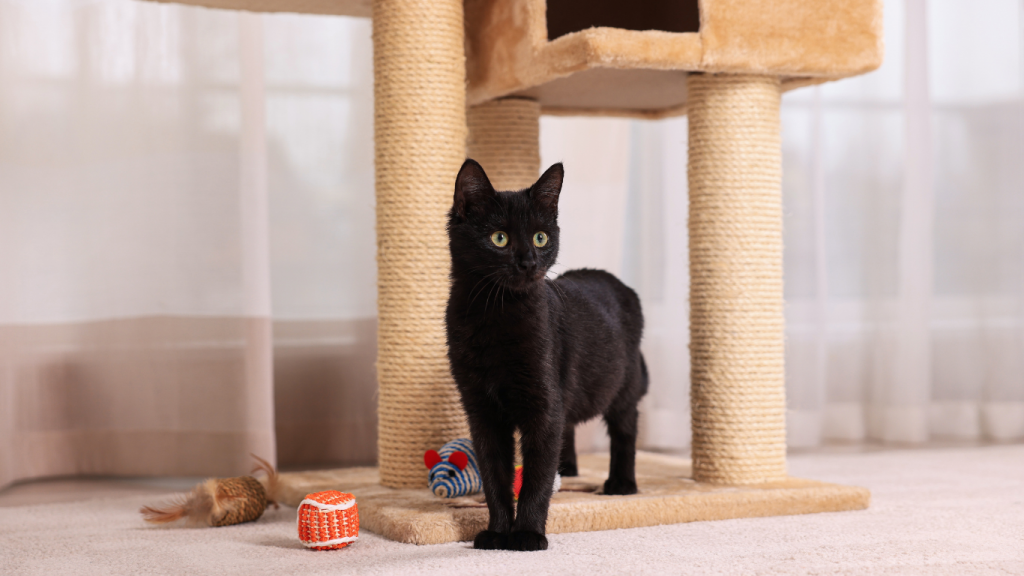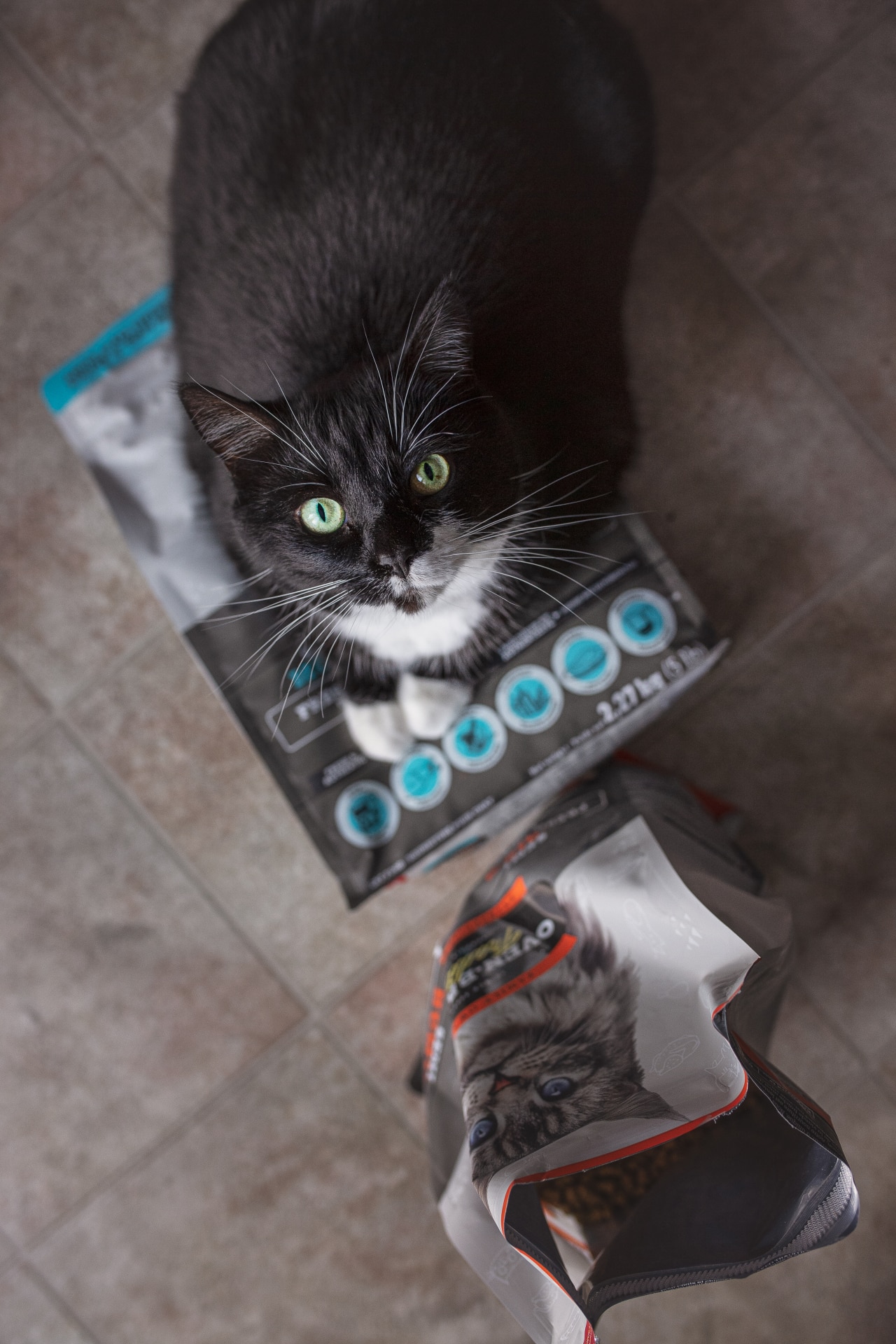How often have you had to shoo your feline friend away from your drapes, rug, or sofa? Despite your best efforts, sometimes cats just can’t stop scratching.
But why do cats love scratching so much? And if they’re scratching things they shouldn’t, how can you teach them to scratch appropriately to protect your home?
This blog will explain why cats enjoy scratching, how to prevent damage to your home and furniture.Plus, we will discuss how a scratching post can become your cat’s new best friend!

Why does your cat love scratching?
The first thing you should know is that scratching is a normal, healthy behavior. It’s part of a cat’s natural instinct, used for exercise and marking territory. If your cat is looking out for a perfect scratching spot, it’s actually a healthy habit.
There are several reasons your cat wants to scratch, see below:
1. Exercise
Scratching is great exercise! Can you blame your cat for wanting to stay fit and active? Just like you, your cat likes to stretch and move after waking up. When cats scratch, they stretch their back, legs, and paws, helping them stay limber.
2. Territory
Cats like to feel like the king (or queen) in their own space, and there are many ways to communicate their territory to other cats. Scratching helps make their mark in their territory, send signals to other animals, and feel secure in their home.
3. Instinct
The natural urge to scratch is part of every cat’s instinct. If a surface looks appealing and feels good, cats will naturally want to dig their claws in. This is why it’s important to respect your cat’s needs. Provide alternative scratch options to meet their needs instead of just trying to get them to stop.
Now that you know why cats scratch. What can you do if their favorite spot is somewhere unsuitable, such as your sofa or curtains?

How can you prevent inappropriate scratching?
If your cat’s favorite scratching spot is your sofa or curtains, here’s how you can redirect their behavior:
1. Encourage good scratching behavior!
- Place cat trees or scratching posts near windows. Cats love lounging and watching birds, which can help keep them engaged.
- Use catnip to create a fun, appealing area.
- Reward your cat with treats or petting when they use their scratching post.
2. If you catch your cat scratching your furniture, redirect them to an appropriate activity to protect your furniture
- Yelling or clapping at your cat when they scratch furniture won’t help, it may cause fear rather than learning. Instead, pick them up, play with them, or offer a toy.
- Discourage your cats from scratching by removing or covering objects you want to protect. Turn speakers towards the wall, use plastic covers,or try double-sided sticky tape as a deterrent. It may look unattractive, but it’s temporary until your cat learns better.
- Clip your cat’s nails regularly. It’s important to get your cat used to short nails from a young age. Once they get used to shorter nails, they will want to scratch less. This makes it easier to learn good scratching habits.

Get a scratching post
If you don’t already have a scratching post at home, make sure there’s at least one scratching post available per cat. Ideally, near their favorite spots to keep them interested in the post rather than your furniture.
Don’t worry about a scratching post looking out of place in your home. Scratching posts have changed quite a bit and there are so many sizes, models and designs that are sure to fit your taste and match your decor.
To keep your cat interested, consider these factors:
- Choose a scratching post that fits your cat. Cats like stretching their whole bodies when they scratch!
- Consider how your cat enjoys being pet. Think about how they might rub against a scratching post. Choose a shape that aligns with your cat’s habits.
- Think about how your cat scratches. Some cats prefer scratching on a flat surface, so maybe find a post that has a horizontal base they can scratch on. Finding your cat the perfect scratching option will tempt them to use it more often.
- Consider natural textures. When a cat scratches, they want to dig their nails into the post’s surface to remove the outer nail sheath. If the post is covered in carpet, all that will happen is that the cat’s nails will get stuck in the carpet. If possible, choose materials like exposed wood or sisal rope, which mimic natural scratching surfaces.
- In nature, your cat would choose a sturdy, tall surface like a tree trunk to scratch on. So the ideal material would be a post with some exposed wood or sisal rope.

What should I look for in a perfect scratching post?
If you’re unsure where to start, this guide will help you find the scratching post your cat not only needs, but will also enjoy using.
1. Stability
This is the most important factor to consider. A wobbly post can be dangerous and discourage your cat from using it. Choose one with a sturdy base that won’t tip over.
When possible, test the stability yourself. Although you’re much stronger than your cat, the post shouldn’t wobble or tip over to ensure safety.
2. Sisal Rope
Carpet, cardboard, and sisal (either rope or fabric) are the most common materials used for cat posts. Something around the house, like cardboard, makes a decent surface for scratching, but it isn’t very sturdy. While it’s also budget-friendly, it doesn’t last long. Try looking at posts with natural materials if that’s an option.
Sisal is one of the best options on the market, it comes as rope that’s wound around a post. It does wonders for claws, feels great on your cat’s claws and cats love trying to shred it. Another benefit of sisal is the appealing noise the post makes and cats love it
3. Size And Shape
Most cats prefer to scratch vertically, so they need a scratching post that is taller than their body length. This allows them to fully stretch and exercise.
If your cat scratches the carpet in your house, try using a horizontal scratcher to see if your cat prefers that shape.
If your cat needs both vertical and horizontal surfaces, you can consider a multi-surface post.
Oven-Baked Tradition wants you to keep in mind that all cats are different. It may take time for them to learn how to use their energy in the right way.
Never punish your cat for scratching in the wrong place. With support, praise, encouragement, and patience, you and your cat can have a happier relationship. An amazing scratching post can help too!

